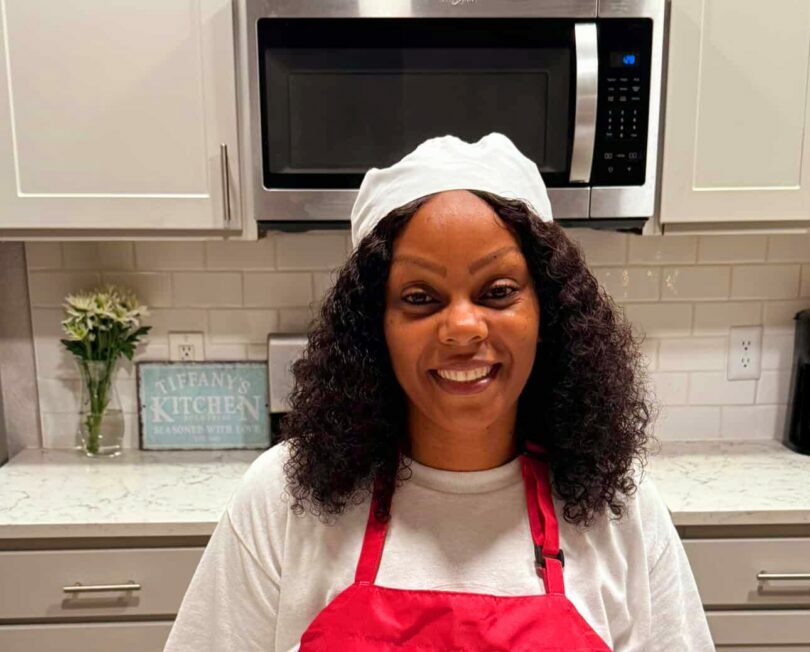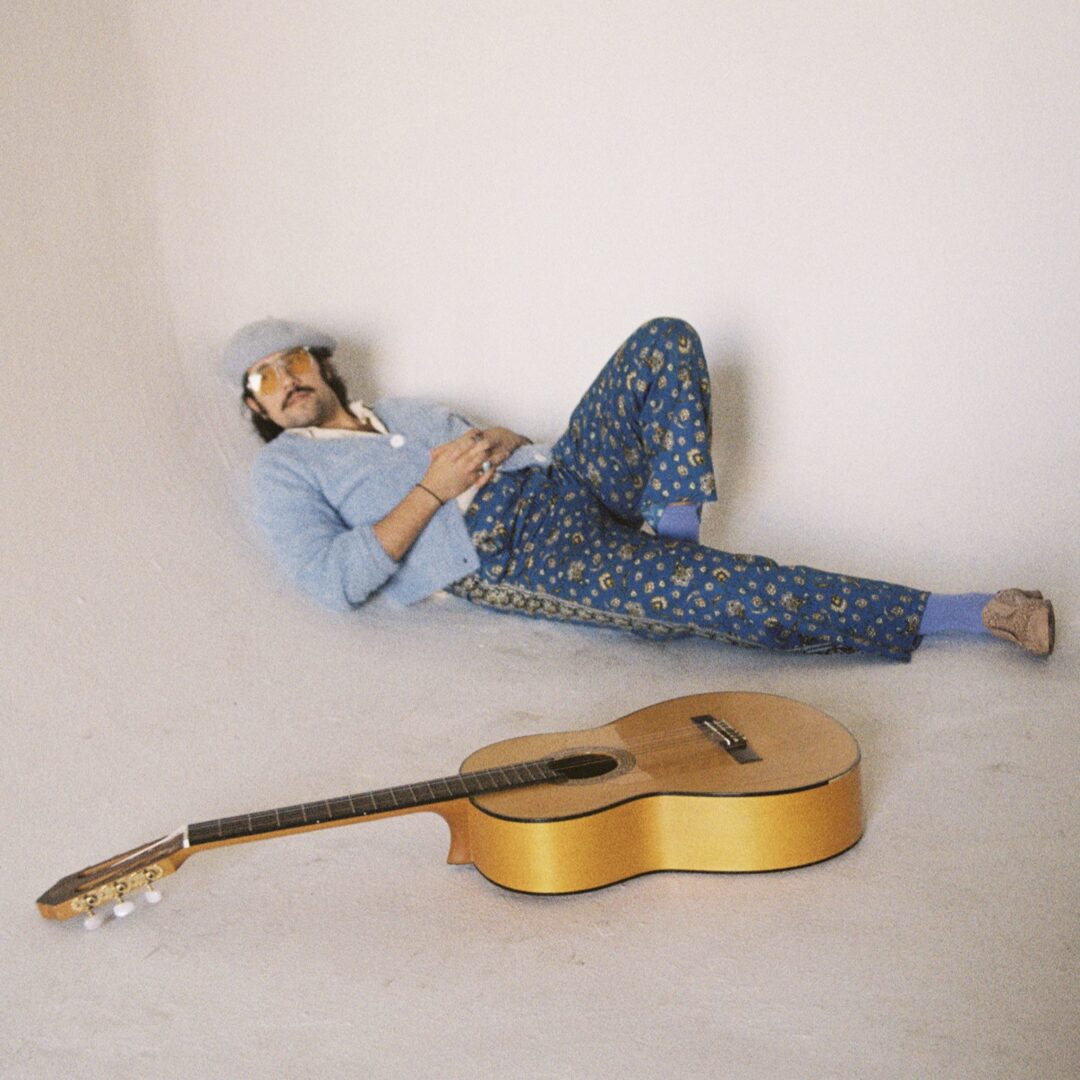We’re excited to introduce you to the always interesting and insightful Nancy Rourke. We hope you’ll enjoy our conversation with Nancy below.
Nancy, so good to have you with us today. We’ve always been impressed with folks who have a very clear sense of purpose and so maybe we can jump right in and talk about how you found your purpose?
I found my purpose after participating in the De’VIA movement around 2010. De’VIA stands for Deaf View/Image Art which is art that expresses the Deaf experiences from a cultural, linguistic, and intersectional point of view that was coined in 1989. I also learned from the book, Understanding Deaf Culture, in Search of Deafhood, written by Paddy Ladd about Deaf culture and searching for my lost identity. I think that was what got me to making art and I was eager to let out all of my unfortunate experiences and paint them. After painting about my Deaf experience, people told me to downplay the negative feelings I had and not allow my art to reflect the injustice I had experienced. They felt that I would not do well in the art world if I painted artwork that focused on these feelings expressed by my own resistance art.
I ignored the advice and received a grant to study Deafhood through painting and to explore the theme of Audism, Deaf Culture and Politics. Before I had the grant, I didn’t have the materials to start painting. My ideas were ahead of me, and I had notes everywhere. I was so sure I wanted to paint something that would grab people’s attention.
Let’s take a small detour – maybe you can share a bit about yourself before we dive back into some of the other questions we had for you?
I was born deaf and my parents did not know that until I was six years old. I grew up attending mainstream programs in San Diego. I learned American Sign Language later in college at Rochester Institute of Technology in Rochester, New York. I am an enrolled member of Mesa Grande Band of Mission Indians in the Kumeyaay Nation, San Diego County. My father grew up on the reservation. My mother was from Michigan. I was the only deaf person in my hearing family. I have an older sister and a younger sister. After college, I worked at a film production company for Fox Century, making color palettes for colorizing classic black and white films, such as Casablanca, series films starring Shirley Temple, Sherlock Holmes, King Kong and other films. I would go to a library and search for a specific colour such as John Wayne’s blue eyes. Then I worked for Microsoft Corporation as a graphic designer in Seattle. Today, I am a full-time professional artist. I work as a co-coordinator for the De’VIA Curriculum workshops which helps art teachers develop lesson plans for nationwide art programs at Deaf schools and developing lesson plans for art programs at Deaf schools. I have traveled all over the country and overseas to teach De’VIA and give paint workshops and presentations about my artwork. I have gone to numerous artist residencies to teach and paint. The Silesian Museum in Katowice, Poland currently owns three of my large-scale paintings. I have illustrated four children’s books. I have painted over 38 murals interior and exterior in public areas and deaf schools across the country. During my upcoming 2024 artist residency, I am commissioned to paint a 56 ft wide by 19 ft high mural at Gallaudet University. The Gallaudet mural will be the largest one ever. In May 2024, I will have a solo show of new paintings at the Deaf Culture Centre in Toronto, Ontario Canada. Another mural project in 2024 will take place at the Minnesota State Academy for the Deaf.
As for my art process, I am influenced by the Fauvism Movement and the Neo-Expressionist Movement because they are characterized by bold colours that attract me. I utilize Monochrome only for saturated color areas. I make vivid powerful, brushstroke marks. I do quite a bit of ‘direct painting,’ which is done in a single application. That means using a one-opaque painting technique. Painting from light to dark. I vary types of brush strokes, from thick to thin and short to long marks. In addition, I do a lot of ‘scrubbing’ in many directions. I do ‘scumbling’ with a dry brush, too. That is meant to soften the color of a painted area by overlaying parts with opaque color applied lightly with an almost dry brush. I use primary colours that have come to be identified with my work and are now referred to as Rourkeism. Each colour has a meaning behind it. Red refers to empowerment or taking a stand for justice. Yellow means hope for the future and improvement for life. It also refers to light as Deafpeople need the ability to see to understand information. Blue has two tones in my work. Light blue means happiness and the Deafhood journey. Darker blue refers to Audism, oralism and discrimination. Black and white colours are used as stylistic reinforcement to make the primary colours pop. I limit myself to using only a few colours. What colour do I paint the shadow or the light? The primary colours look fairly easy to work with but when it comes to painting, it is a challenge. Because I have to make sure the shapes do not match the same colours and to keep them separately or to oppose the colours. I use motifs often in the paintings. I like to see people analyzing and making them think deep. An example of a motif would be a Band-aid that represents protection, the act of preservation and healing.
The creative process comes from books that I use for my thinking. A few of the favorite books I have are, “The Courage to Create” by Rollo May, “Visual Thinking” by Rudolf Arnheim, and “The New Art Revised” by Gregory Battcock. These books are full of information about art theory, and I find them useful to spark my creative thinking. Three elements inform my creative process: the work’s theme, category, and motifs. When you look at my paintings you can analyze them using these elements.
Overall, what is the theme, what is the painting about? Is the painting a work of resistance, affirmation, or liberation? What motifs are used? For instance, one recent painting, “Dinner Table Syndrome,” the theme is about how Deaf people are commonly left out during holiday gatherings and unable to follow what people are discussing. The category of this painting is resistance which means I am telling a truth about discrimination that Deaf people face.
I want the artwork to be something hearing people can see and understand our experience. The painting has eleven motifs such as table, plate, and hands.
Many of the paintings that I have done are about truth-telling. One painting which appeared on a magazine cover was “Deaf Beaten” about Police Brutality. The painting documented Deaf people who have been beaten and killed by police officers. In the painting, a Deaf person is on the ground and his eyes are bruised. His hands are tied behind the back, and we can see he is still making the sign, “HELP!” Because Deaf people do not hear the orders from police, they have had traumatic experiences dealing with police.
I make political statements through my art that address social justice, activism, human rights, and Deaf solidarity. I seek to educate and call attention to issues that affect Deaf communities.
Topics shown in resistance art include controversies, oralism, mainstreaming, genetic engineering, communication barriers, colonialism, paternalism, and audism.
In affirmation art, the work shows a celebration of ASL, Deaf culture, identity, Deaf history, and Deafhood as well as Deaf empowerment. In liberation art, resistance and affirmation messages work together to show the journey from oppression to empowerment.
My paintings bear witness to the experiences of Deaf people who have lived in a world controlled primarily by people who carry the history that “Deaf people are born senseless and incapable of reason” (Aristotle, 348-322 BC). To challenge this, my paintings show both the truth of how we are oppressed and how our community celebrates our collective identity and culture.
Looking back, what do you think were the three qualities, skills, or areas of knowledge that were most impactful in your journey? What advice do you have for folks who are early in their journey in terms of how they can best develop or improve on these?
My mother taught me that if I have talent, to use it and not to waste it. When new ideas pop in or if something clicks on my mind I make notes. My advice is to stay consistent and be consistent at what you do. Carry a sketchbook and pencils or a small box of paint with you. When I became consistent at what I do, I became prolific at my work. I share that advice with folks who are eager to learn and always curious to know what I would do next. These qualities and areas of knowledge are what helped me become successful in my art career.
Okay, so before we go, is there anyone you’d like to shoutout for the role they’ve played in helping you develop the essential skills or overcome challenges along the way?
My mom because she always believed in me. She saw the talents I had and gave me the encouragement to always use it and not to give it up.
Contact Info:
- Website: https://www.nancyrourke.com
- Instagram: https://www.instagram.com/nancyrourke/
- Facebook: https://www.facebook.com/nancyrourkepaintings
- Linkedin: https://www.linkedin.com/in/nancy-rourke-4706604/
- Youtube: https://www.youtube.com/@nancyrourke
- Other: https://linktr.ee/nancyrourke https://nancyrourke.square.site https://nancyrourkeinpoland.com https://www.dandelion.press/shop/p/nancy-rourke-deaf-artist-series








Image Credits
these pictures were taken by Nancy Rourke




